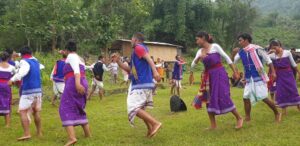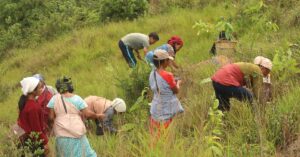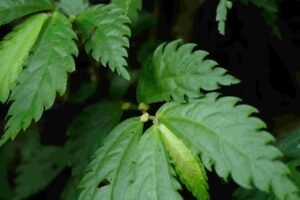Agriculture has always been revered as a sacred practice by Indigenous communities worldwide. In many of these indigenous communities, agriculture is seen as a special endowment from their deities/gods. As such, the blessings of these deities and gods are invoked prior to undertaking agricultural works during the start of the year.
Although the advent of Christianity and the eventual religious colonization has led to many of these practices becoming obsolete, some indigenous communities have been able to retain the tenets of rituals that were practised by their animist forefathers. There are also some communities where Christians co-exist with animists and these rituals are still practiced.
One such example can be cited from a NESFAS partner community Plasha from Ri Bhoi District in Meghalaya.
For the community of Plasha, the month of April marks the end of the traditional calendar year. The arrival of spring sees a shift from festivities to the vital task of preparing the lands for cultivation and growing food. Central to this transition is the performance of a traditional dance called the Shad Domahi.
The dance assumes the role of a prayer and the community sees it as a means of communicating with the god ‘Nongbuh Nongthaw’ (Creator). Through the dance, the community – which depends on their crops for their sustenance – tries to appeal and appease the divine forces for a bountiful harvest.
The celebration of this ritualistic dance starts with the gathering of all the local cattle into a sacred location known as ‘chorong lang palu’, often situated near the paddy fields. The Plasha community holds cows in high regards for their multifaceted support to humanity – from sustenance to labour. Since their well-being is paramount to maintaining this support, the cows are bathed and sprinkled with water as a gesture of gratitude and to seek blessings upon them.
Following the bathing of the cows, the community engages in the traditional Domahi dance which is akin to carolling in other cultures. Here, the participants visit households, where Sangpher (beaten rice and jaggery) are shared or exchanged with visitors.
Today, with the advent of Christianity, the Domahi dance sees participation primarily from the animist members of the village. However, Christians also join in during the celebration to honour and cherish the values it represents.
“The entire community remains dedicated to safeguarding this rich culture and tradition because it defines who we are as a community. The participation from both sides of the community (Christians and animists) ensures that our cultural heritage remains alive and is transmitted to future generations,” shared Bah Turin Taro, community member, Plasha.
This story has been documented as part of the TNC-supported NESFAS’ project “Protection of forests in Meghalaya by adopting participatory, gender-centric, and equitable approaches”.




